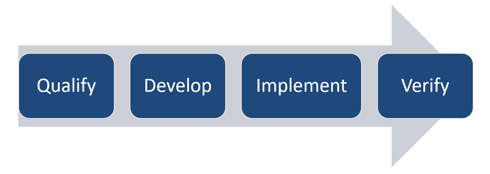The Better Buildings by Design conference took place a couple of weeks ago here in Vermont. The two-day conference brings together contractors, utility representatives, architects, engineers, and other energy professionals to discuss energy efficiency, durability, and operations and maintenance for residential and commercial buildings. It included sessions across multiple subject tracks, workshops, and a trade floor with many exhibitors, and offered a great opportunity for learning about new developments in the field and networking with fellow energy nerds. Cx Associates had a strong attendance at the conference, with several of us presenting in multiple sessions.
Retrocommissioning Case Study
Along with my colleague, Eveline Killian, and other project stakeholders, we presented a case study on a successful retrocommissioning (RCx) project at the Vermont Historical Society in Barre, VT, also including general information about retrocommissioning and how the process currently works in Vermont. RCx projects aim to identify low-cost or no-cost measures that improve building operation from both an energy and comfort standpoint using the existing systems. Typical measures may include performing maintenance such as repairing dampers or calibrating sensors, and simple adjustments to control sequences to optimize equipment scheduling and eliminate simultaneous heating and cooling. The potential for RCx to save energy in existing buildings is huge, considering commercial buildings account for 20% of U.S. energy consumption, and implementing RCx projects leads to median whole-building energy savings of 16%.

The RCx project at the Vermont Historical Society was performed under the Efficiency Vermont retrocommissioning program, which is a relatively new program developed in 2016 and consists of up to four phases – qualify, develop, implement, and verify. A great aspect about this program is that it helps to significantly reduce the barriers a building owner faces with getting an RCx project off the ground, since Efficiency Vermont will pay the entire amount for the initial qualification phase (up to $5,000), which determines whether a building is a good RCx candidate and should continue with the process. Incentives are also available to develop and implement identified measures. We have found that by bringing together the building owner, controls contractor, commissioning agent, and other stakeholders at the beginning of the project, many issues can be quickly identified, and some can even by resolved immediately through simple changes in the building automation system. Some of the measures implemented for the Vermont Historical Society project include:
- Eliminating simultaneous operation of the chiller and dry cooler. This was resolved by adjusting the outdoor air enthalpy switchover control between the dry cooler and chiller and disallowing simultaneous operation.
- Hot and chilled water loop differential pressure reset. Using trim-and-respond logic, loop differential pressure was reset based on polling valve positions, allowing for significant reduction in pump speed and energy consumption.
- Tightening schedules and setpoints. Occupancy schedules were applied to air handling units that had been operating continuously 24/7.
- Correcting minimum ventilation rates. We found that the outside air dampers on the air handling units were overridden to be closed. While increasing the amount of outdoor air introduced to the building will most likely lead to an increase in energy use, providing adequate ventilation is necessary to meet building codes and for ensuring good indoor air quality for building occupants.
Photo by Robin Dessureau
Results of the project were impressive, yielding over $12,000 in annual energy cost savings at an implementation cost of just over $13,000, for a payback of just over a year. These savings will continue to accrue for several years, allowing the Vermont Historical Society to put the money toward other important aspects of its mission.
Other Conference Highlights
The conference slate was full of interesting topics, including a number of sessions on cold climate air source heat pumps and their applicability in Vermont. This is an exciting area of development, since it theoretically allows for the elimination of fossil fuels for space heating, if the electricity used to run the heat pumps is generated using renewable resources. One session was dedicated to air-to-water heat pumps, which could make use of the extensive knowledge base for hydronic systems that exists in Vermont. After taking in all of the educational and inspirational content, I look forward to attending next year’s conference!



